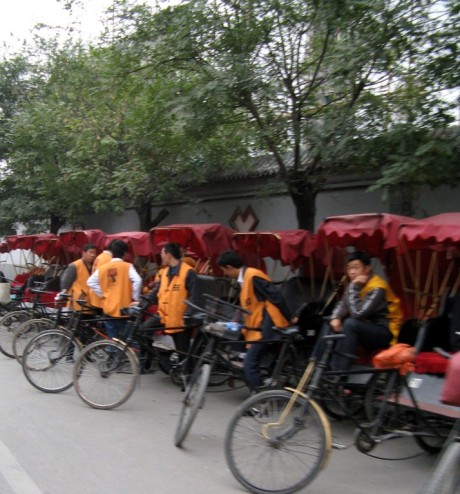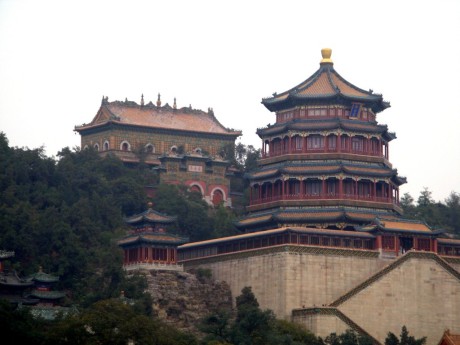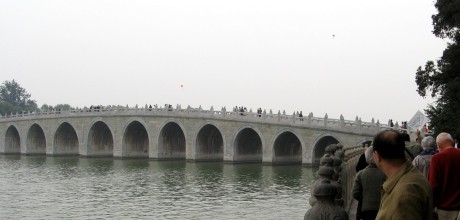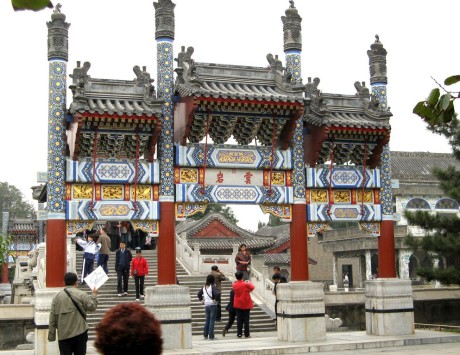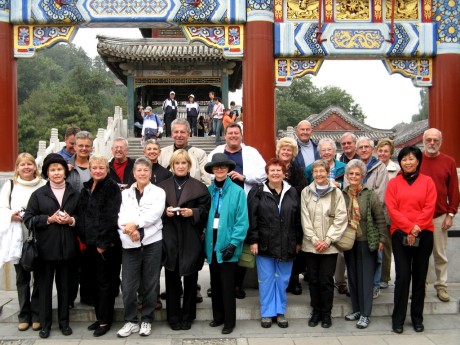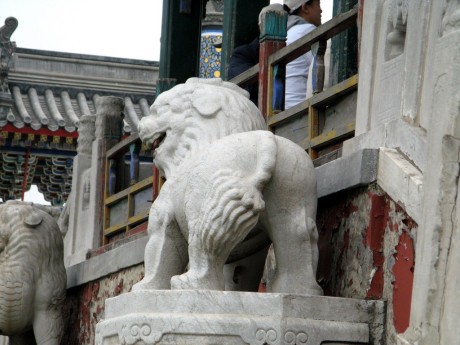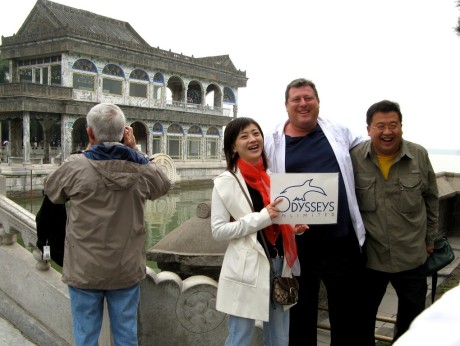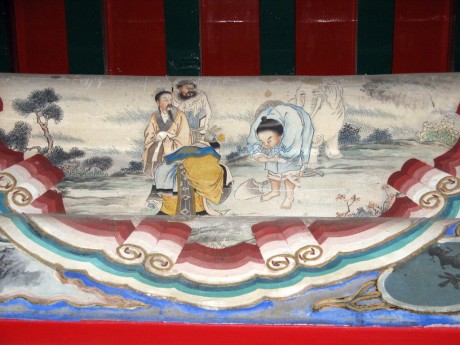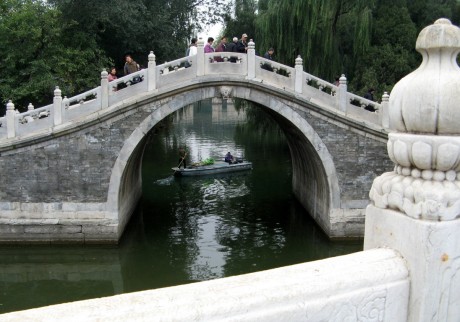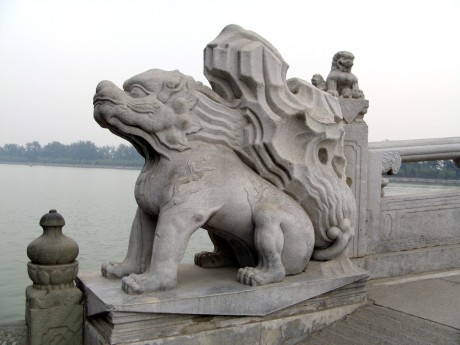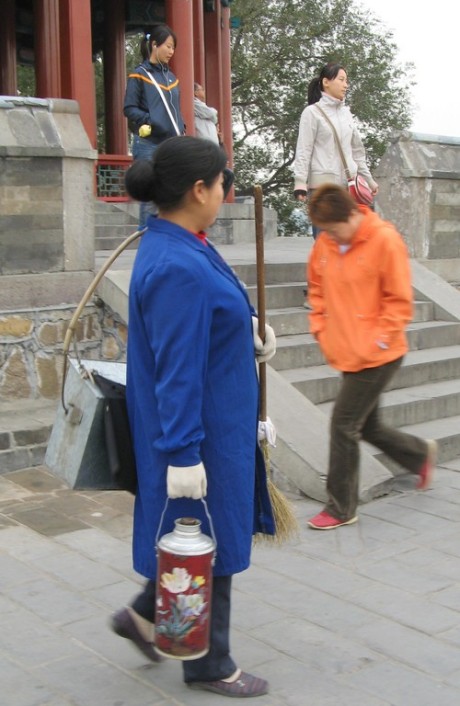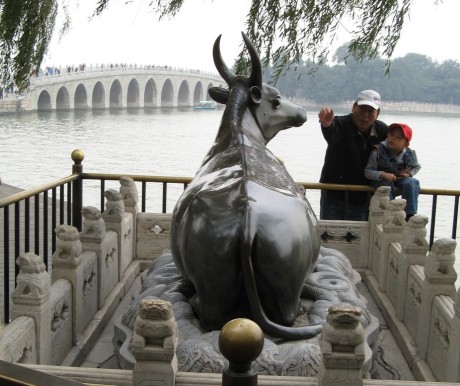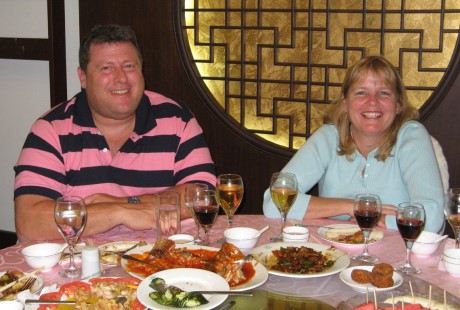
We visited the Yonghe Gong Tibetan Temple in Beijing, the only Tibetan Temple not destroyed by the Red Guard during the 1960′s cultural revolution. It houses a very famous statue of Buddha made from a single, gigantic sandalwood tree and is listed in the Guinness Book of World Records. (My camera couldn’t get this picture. I got it on-line from worldinprint.com.) What I did get is the many worshipers around the temple grounds who do not mind if you take their pictures during what is a rather personal, private event. And, the beauty of the temple itself.

Like most Chinese heritage sites, there are multiple buildings and plazas. The complex is huge and mobbed. Ten percent of Chinese identify as Buddhist, but many more really are. The tradition is deeply rooted and the Chinese people want to do good deeds and enjoy a better life in the hereafter. They feared retribution during the Cultural Revolution and have only recently returned to their temples.

A detail of the roof of the main building.

The worshipers mob fire pots to light their incense bouquets, some quite large.
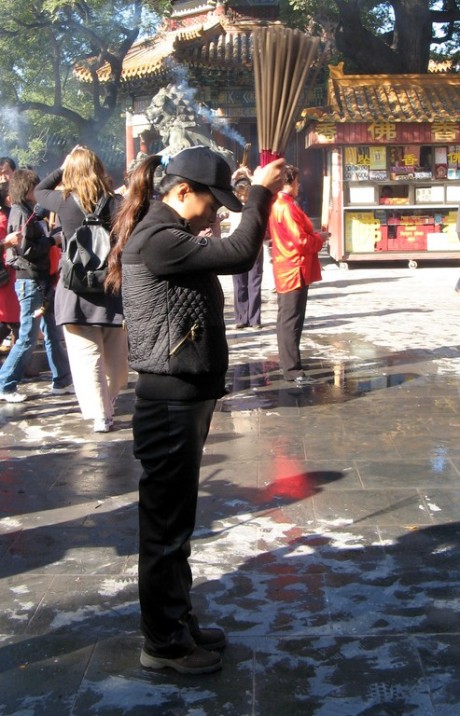
They touch their forehead, mouth and then bow.

During the ritual, they recite the mantra: Mind, Word, Deeds. The street on both sides was filled with incense stands, and we wondered about them.
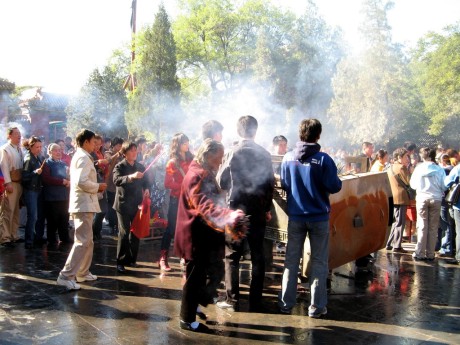
Then we saw the huge bouquets of incense they use.

A pot for dousing the flames is ignored and used for offerings instead. They allow the incense to burn down to the nub.

There are many stations like this one where people contemplate their lives and pray to be better citizens and to ask for wellness and hope.

Some worshipers pass through the building behind them that houses multiple Buddha’s, some black, some gold. From Buddha’s position, just a small change in an arm or leg, comes different meanings. Some are painted black, others are bronze.Tibetan Buddha’s all face north.

This man is thankful for his son in a one child family. He comes to thank Buddha for answering his prayers for a son.

This device is something like a prayer wheel. It has an inscription on it and people touch it quite reverently.
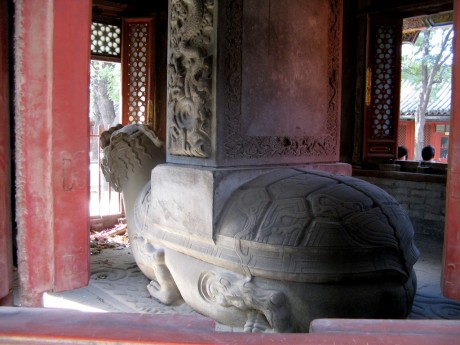
In one open building sat this huge tortoise-like creature.

Its mouth was filled with offerings for the monks, and maintenance of the buildings.

The monks don’t mingle much with the people. They are somewhat reclusive. This one wears a tan robe.

Another wore a saffron robe. The color of the robe dictates different functions.

And, you are never far from the protective spirit of the lions.


